| Umělec magazine 2008/2 >> Arts Education in Mexico: Between contempt and subordination | List of all editions. | ||||||||||||
|
|||||||||||||
Arts Education in Mexico: Between contempt and subordinationUmělec magazine 2008/201.02.2008 Héctor Villarreal | art education | en cs de es |
|||||||||||||
|
Every three years, beginning in 2000, the Organization for Economic Co-operation and Development (OECD) conducts standardized tests in member countries as part of the Program for International Student Assessment (PISA). Its goal is to “evaluate students as they complete compulsory schooling” at 15 years of age, independently of their grade level. The examinations are not aimed at verifying the acquisition of specific knowledge but rather “capabilities,” by which one is to understand “the skills, the expertise and aptitudes of students to analyze and solve problems, to handle information and to address situations they will face in adult life that require such skills.”1 The specific capabilities that are tested are reading, mathematics, and science.
Even though it has been demonstrated that traditional schooling and the arts together operate positively in the neural fabric of minors, strengthening self-esteem, guarding cultural identity, as well as promoting pluralism and the recognition of and respect for others,2 arts education is not evaluated by the PISA, nor are physical education and athletics,3 even though their benefits too have been widely demonstrated. It is as if aesthetic and physical education were not essential to self-actualization. Can we really claim that educational curricula have been created and designed for the training of capabilities? Is it really more important to know the names of the capitals of Swaziland or Tajikistan, and be able to point them out on a map, than it is to be capable of playing a melody with a musical instrument? Is geography more important than music in confronting the vagaries of adult life? Is knowing dates and details of Napoleon’s battles more important than being able to successfully navigate a career, or gaining competence in problem solving? Why not reduce the number of hours that young people spend in geography and history class and increase those they spend with subjects that evidently bear more directly on economic growth and development? In his presentation at the UNESCO World Conference on Arts Education, Bernard Hugonnier, Adjunct Director of Education for the OECD, proposed to include arts in the PISA evaluations. The Programme tests, he suggested, could be used to measure the effect of arts on learning more generally.4 The purpose of the conference, subtitled “Building Creative Capacities for the 21st century,” held in Lisbon, Portugal, from the 6th to the 9th of March 2006, was “to affirm the need to foment creativity among young people in the 21st century, and establish the importance of arts education in all societies.” During the inauguration, the General Director of the UNESCO, Koichiro Matsuura, affirmed that “creativity, imagination and the ability to adapt, capabilities that are developed by means of arts education, are as important as technological and scientific skills required” to address contemporary world problems. One of the specialists that took part, Antonio Damasio, went even further than Matsuura, signaling that education in the arts and humanities not only contributes to the formation of citizens with a capacity for innovation, but they are an essential element in the development of the emotional capacity necessary for moral behavior.5 One of the most distinguished presentations that broached the topic, was given by Ken Robinson, Senior Advisor for Education of the J. Paul Getty Trust in Los Angeles, in which he highlighted the shocking educational crisis faced the world over. Up until now, he explained, the educational curricula have been built in accordance with the following hierarchy: at the top are languages6 and mathematics, then humanities, and finally, at the lowest level, at the margin of extracurricular activities, the arts. Furthermore, between the arts, music is always in a better position than dance and theater. Given this arrangement, Robinson recommends that the hierarchical fashion by which subject matters are organized should be substituted by a new paradigm of horizontal collaboration, based on personal development, in which literacy, arithmetic, and the arts would constitute the base line of educational programs for the capabilities training for tomorrow. Mexico, one of the thirty member countries of the OECD, ranked last in the 2006 PISA evaluation, results made known November 2007. Twenty-seven other countries also took part in the evaluation, and Mexico ranked below most of them too. Nearly half of all Mexican adolescents examined did not achieve “the necessary minimum for life in contemporary society” (earning less than 335 points out of a maximum of 700), and less than one percent earned a score that placed them among the best (those earning more than 625 points).7 These results demonstrate that there are serious deficiencies in Mexico in the instruction of reading, writing and arithmetic. Education in Mexico, as a whole, is not competitive with that given in more developed countries. The disastrous state of education in Mexico is a result of structural conditions that were overcome long ago, or in fact never faced by more developed countries. One of every four citizens receives nothing more than the most basic education. A large segment of the population is dispersed over an enormous territory of often difficult terrain. There are 190,000 populational entities of less 2,500 inhabitants each.8 Strapped budgets prevent investing in the sector; all the money goes to pay teachers and finance bureaucracy. There are a large quantity of poorly prepared professors without any vocation. Teaching attracts those with no vocation since in a Country with high rates of unemployment it ensures a steady and perpetual income and good credit. It is nearly impossible to be fired as a teacher. The teacher’s union limits, conditions, or prevents improving the quality of the education, among many other factors.9 If the PISA or any other program evaluated arts education, Mexico would fare even worse. There are a number of reasons for this: a minimum of planning, ambiguous and lax strategies, scarce and poorly financed implementation, and non-existent evaluation. The problem with conceptualizing arts education lies even in the name itself. The phrase used in Spanish, educación artística, would be more correctly translated into English as “artistic education,” a phrase that is unnecessarily equivocal, polysemic, and polemic. In Mexico we do not use the more precise expressions education in the arts or education for the arts. By “artistic education” one would understand that education is conducted in an artistic fashion, instructors teaching like an artist would, even if the subject is mathematics. In practice, however, it is commonly understood as being equivalent to education for the arts, that is the teaching and learning of music, voice, dance, theater and plastic arts. But the problem is much more than terminological. There is not even a process or method appropriate for the instruction and learning of the arts. Instead of drawing class, for example, an amount of time is set aside so that students can draw on their own. In the documents of the National Education System, arts education is alluded to by mixing in or juxtaposing the following three notions: 1. Art appreciation through exposure to art. For example, students can visit a concert hall or museum. 2. Instructing potential artists or fomenting the development of artistic skills. For example, learning to play the guitar or to paint with watercolors. 3. Using art as a way to learn other subjects. For example, putting on a play that portrays historical events or with clay modeling a mountain range or volcano. 4. The diffusion of fine and folk arts. Arts education, as far as the second notion is concerned, is carried out at the margins of the educational system, that is in a few schools or private academies, through lessons given at home, whether the student or teacher’s, or in cultural centers, where lessons are sometimes provided. As a result, you can count on your fingers the number of children’s choirs or juvenile orchestras. Regarding planning, there is not a single indicator nor a quantifiable goal by which to judge whether the aims of the Sectoral Plan of Education, the document governing the Mexican educational system, with respect to arts education, are being met.10 In that document, arts education is envisioned in three ways: to favor the actualization of pedagogical content and methods relative to art, to promote contests and activities of artistic expression, and to impart workshops for developing creative skills.11 Although there is not a single text addressing arts education specifically, there is a program for primary schools. This program distinguishes art education from those subjects “with a more systematic academic purpose.” In effect, this means that the program does not require the acquisition of “required materials,” nor the adherence to “predetermined schedules.” The child, in the realm of art, is imagined to be self-taught. The program presupposes “that arts education fulfills its functions when inside and out of the classroom children have the opportunity to spontaneously take part in situations that stimulate their perception and sensitivity, curiosity and creativity, in relation with artistic forms.” It is consternating that in Mexico the average number of hours spent in class each day of primary school do not add up to even four. Behold, one factor in Mexico’s poor ranking in the PISA evaluation. As far as arts education is concerned, in France children receive six hours per week. In Finland, the country that consistently scores the highest in educational assessments, two hours are dedicated just to music, and sometimes four hours overall to art. By contrast in Mexico only one hour per week is dedicated to the subject. But as the program reads, the time spent on art “should not be limited to the time set aside for it by programs; its very nature makes it relate easily with other courses in which the student has the opportunity to appreciate distinct demonstrations of art.” With that statement the program pretends to provide the conditions necessary for meeting its ambitious objectives, such as equipping students to appreciate “diverse musical styles and taking part in public speaking.” The arts program for secondary school (from seventh to ninth grades) is equally depressing. It purports to meet its own presumptuous objectives by dedicating two hours to the subject per week, through three year-long courses, given by “professors that have no professional training in the arts.”12 Given the amount of time that educational planners set aside for arts education, it is evident that they expect that art appreciation and instruction are to be taught in as much as they are pertinent to other subjects. Arts education is not an end in itself. It is so little valued socially and by educational authorities that nobody is surprised by the poor state of arts education in Mexico. Why doesn’t anybody propose that history or geography should be taught as they arise in the teaching of other subjects? For example, students could learn the names of the continents, of countries and their capitals, by learning about soccer clubs, national squads, and the countries that have hosted the World Cup; or similarly the same could be learned by teaching about works of art, where they come from, are located, and where artists were born and worked. But nobody thinks of subordinating geography to sports or art in this way. Arts education is habitually conceived as having only a derivative didactic function. And this is a transnational phenomenon. For example, in November 2007, during the First Meeting of the Ibero-American Group of Specialists in Arts Education, Culture and Citizenship, held in Madrid with the aim of analyzing the status of arts education in basic schooling programs of member countries, arts education appeared only as a compliment and substitute for civic education. This conference conceived arts education as nothing more than a means for promoting tolerance, countering discrimination, and training citizens for multiculturalism;13 similar to years ago, arts education is still being used as a method for inculcating national identity. It is worth mentioning that in Mexico, in the case of physical education there is a school for teachers who specialize in that field, to train those who teach that subject exclusively. There is no similar school for those who impart arts education. “Therefore, although there always exists honorable exceptions, arts education is more the result of improvisation tied to the conception of art that each educator has, than a systematic and planned pedagogical effort in that direction. It depends entirely on the instructor what the method and the nature of arts education will be.”14 As a result, during several weeks of reduced academic load, in many public schools, time will be dedicated to practicing regional dances or to learning to imitate the choreographies of pop music stars (which is worse?) in order to perform “festivals” with the purpose of honoring mothers, school administrators, or governors. And as if all of this were not enough, arts education appears to be unimportant for the National Institute for the Evaluation of Education. It does not figure among its projects and activities, nor has it published a single sentence on the subject, report, or set of objectives.15 That is to say, arts education is not subject to evaluation in Mexico, neither are there plans to make it so. That programs for arts education are not evaluated, seems to imply tacit recognition that in fact there is really nothing to evaluate. But can we really consider arts education to be a panacea? Can devoting more time to it, in a country like Mexico, really improve capabilities’ training and contribute to imparting an effective and integral education? Would inverting the hierarchy between subject matters really result in more creative, competitive, and better behaved young citizens? As long as the enormous structural problems mentioned are not resolved, it does not seem possible that an effective program could be implemented. And even if it was, would its effects be positive in a country brimming with organized crime, corruption and misery? The only thing that is clear at this point is that while things continue to be done as they have been, nothing will improve. Why not give arts education a chance? There is nothing to lose. 1 Organization for Economic Co-operation and Development El Programa PISA de la OCDE. Qué es y para qué sirve, Paris: OCDE, n.d. Available also in English at www.oecd.org 2 Observatorio Ciudadano de la Educación “Educación artística”, communication 112, in La Jornada, México, D.F., 28 November 2003. This watchdog organization is constituted by some of the best scholars researching education in Mexico. 3 Mexico has the highest incidence of obesity after the United States. It is its principal public health problem. Among children from five to twelve years of age, one of every three is overweight or obese. 4 Lupwishi Mbuyamba, Closing Session of The World Conference on Arts Education: Building Creative Capacities for the 21st Century, available at http://www.unesco.org/cu. This document is a summary of all the round tables, plenary sessions, and workshops that took place during the three days. 5 Ibid. Aristotle, in Politics, affirms the need to include music education as a means of moral education. 6 That is, the official languages of each country. 7 Organización de Estados Iberoamericanos para la Educación, la Ciencia y la Cultura, “México-Informe PISA 2006”, 5 December 2007, found at http://www.oei.es/noticias/spip.php?article1491, based particularly on the presentation and analysis of the PISA exams in Mexico by Felipe Martínez Rizo, General Director of the Instituto Nacional para la Evaluación de la Educación (INEE). Only 5 percent of registered students are enrolled in private schools, these sudents, as in all countries evaluated, scored higher than average. 8 The reality is that in urban areas class sizes may be very large, in rural and isolated areas, however, some classrooms are multi-graded, where one teacher may teach multiple grades at the same time. 9 For example, for musicians, painters or actors to give courses in primary schools, they would have to belong to the National Union for Public Education Workers (SNTE). This is not possible since to be part of the Union one has to have graduated from the so-called escuelas normales, the schools that are part of Mexico’s anachronic system for educating teachers. The teacher’s Union is the largest union in Ibero-America with more than 1.4 million members. 10 See Secretaría de Educación Pública, Plan Sectorial de Educación 2007-2012, Mexico, Comisión Nacional de Libros de Texto Gratuitos, pp. 15-22. 11 Ibid., pp. 43 y 44. 12 Program for Arts Education, available at http://www.sep.gob.mx. 13 Organización de Estados Iberoamericanos para la Educación, la Ciencia y la Cultura, “I Reunión del Grupo Iberoamericano de Especialistas en Educación Artística, Cultura y Ciudadanía”, 23 November 2007, available at http://www.oei.es/cultura/educacion_artistica.htm. 14 Observatorio Ciudadano de la Educación, op. cit. 15 See http://www.inee.gob.mx.
01.02.2008
Recommended articles
|
|||||||||||||
|
04.02.2020 10:17
Letošní 50. ročník Art Basel přilákal celkem 93 000 návštěvníků a sběratelů z 80 zemí světa. 290 prémiových galerií představilo umělecká díla od počátku 20. století až po současnost. Hlavní sektor přehlídky, tradičně v prvním patře výstavního prostoru, představil 232 předních galerií z celého světa nabízející umění nejvyšší kvality. Veletrh ukázal vzestupný trend prodeje prostřednictvím galerií jak soukromým sbírkám, tak i institucím. Kromě hlavního veletrhu stály za návštěvu i ty přidružené: Volta, Liste a Photo Basel, k tomu doprovodné programy a výstavy v místních institucích, které kvalitou daleko přesahují hranice města tj. Kunsthalle Basel, Kunstmuseum, Tinguely muzeum nebo Fondation Beyeler.
|








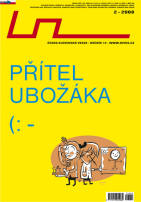

















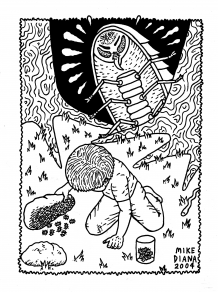




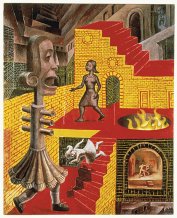
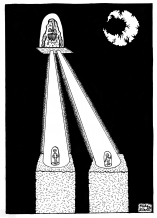
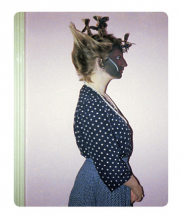
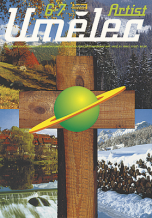


 New book by I.M.Jirous in English at our online bookshop.
New book by I.M.Jirous in English at our online bookshop.
Comments
There are currently no comments.Add new comment